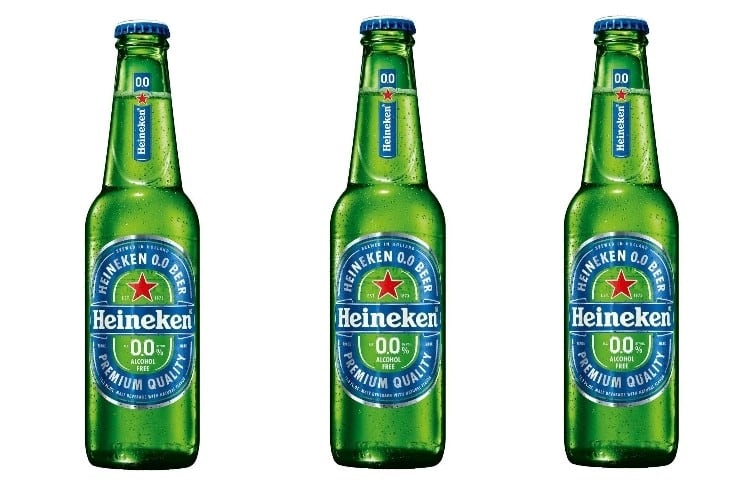According to a IWSR-Vinexpo report released earlier this year, at present China’s wine market value ranks top in Asia but third globally at US$16.5bn, trailing behind the United States (US$34.8bn) and France (US$16.7bn).
China has been predicted to overtake France to claim the second spot by 2020, and reach over US$19.5bn in value by 2022.
In terms of volume, China was also the top-ranking country in Asia at 156 million cases of wine, reaching the fifth spot worldwide. This was behind the United States (318 million), Italy (266 million), France (250 million) and Germany (224 million).
The country also imported the most wine in Asia at 61 million cases, reaching the fourth spot worldwide. This number is expected to increase by 8% (in terms of import value) this year.
Germany was the world’s leading import market (126.3 million cases), followed by the United Kingdom (114 million) and the United States (79.9 million).
“In the run-up to 2022, premium wines (US$10 to US$20) will be the biggest driver of value growth for still and sparkling wine (+15%),” said the researchers.
This prediction is concurred by other research – according to analysis from China Wine Market, there are currently some 48 million regular wine drinkers in China.
“[These] individuals belong to the upper-middle class sector of the population [and] have more disposable income compared to others,” said the analysts.
“[Despite] the higher prices, they prefer to purchase and drink imported wines from Europe rather than drinking local Chinese brands.”
The number of wine consumers has also been predicted to rise to around 70 or 80 million by 2020.
Trends driving this increase
IWSR described wine in China to be ‘the hot category’ amongst young consumers, as it is perceived to be ‘modern, fashionable, healthy and sophisticated’.
Indeed, the age of the average Chinese wine consumer has been on a downward trend in recent years, with most recent numbers stating that 40% of imported wine consumers are between the ages of 19 to 29.
Along with this has been a rising realisation in China’s wine market that many consumers, especially younger, female ones, are veering towards wine consumption for health and beauty reasons.
Additionally, the concept of smaller packaging for retail wines has also been gaining traction in the country. A recent report by Tmall and CBN Data revealed that small pack white wine is fast becoming the beverage choice for small group gatherings.
Riding on this, local wine manufacturers like Jiang Xiao Bai, a white wine brand by Chongqing Jiangji Distillery have started producing smaller variants of their product.
In an effort to target the younger consumer demographic, the company’s 100ml white wine glass bottles are covered by a layer of paper packaging with chic designs, including cartoons, life-style photos, and quotes by consumers.
China’s online alcohol market largest globally
Also of note is that the e-commerce market for alcohol in China is the largest in the world, valued at US$6.1bn, and wine plays a major part in this.
According to the IWSR: “This is four times the size of the US beverage alcohol ecommerce market, and three times the size of the next-largest markets of France and the UK.”
Two of China’s e-commerce giants, Tmall and JD.com, take up 70% of the online alcohol market in China. Over 50% of Chinese consumers make online purchases on a monthly or more frequent basis.
“Wine is the major alcoholic beverage category sold online, typically with 60% to 70% share of online beverage alcohol sales,” added IWSR.
The anticipated growth rate for the alcohol e-commerce market in China is 15% per year.
Pushing for more and better wine exposure in China
Further evidence of growing interest in China’s wine sector is the launch of International Wine Challenge (IWC) China - the most rigorous, impartial and influential wine competition in the world.
Organised by William Reed Business Media, publisher of FoodNavigator-Asia, the IWC China is now open for applications.
According to IWC: “If you have wines in your portfolio that target the Chinese market, you might be interested in entering IWC China, the new international wine competition specifically designed for China.”
“The competition will judge Chinese wines as well as wines imported into China for the Chinese market. Help your wines stand out from the crowd with an IWC China medal.”
All Gold, Silver and Bronze winners will win packages that include 5,000 promotional reflective medal bottle stickers, a PR campaign focused exclusively at China and more.
Judging will be conducted by a professional panel including Corporate/Group Director of Wine for Shangri-La Hotels and Resorts Yang Lu, internationally recognised wine expert Oz Clarke and Brokenwood Wines Managing Director Iain Riggs.
To register for the IWC China 2019, please visit the IWC website here. The online entry deadline for the competition is May 1 2019.
Delivery deadlines vary based on the region your wine will be shipped from, so for more details, please visit the IWC logistics guidance website here.





